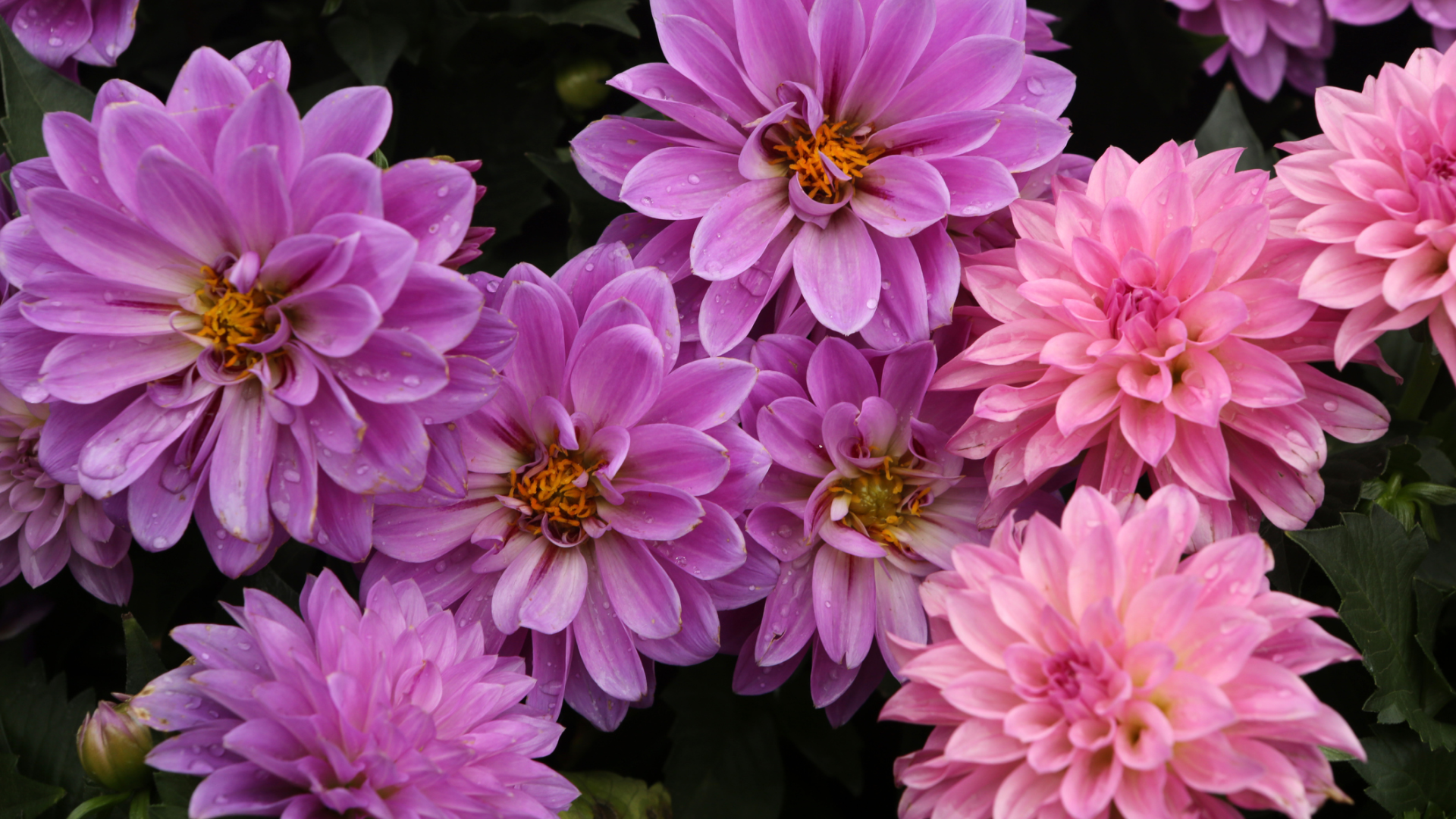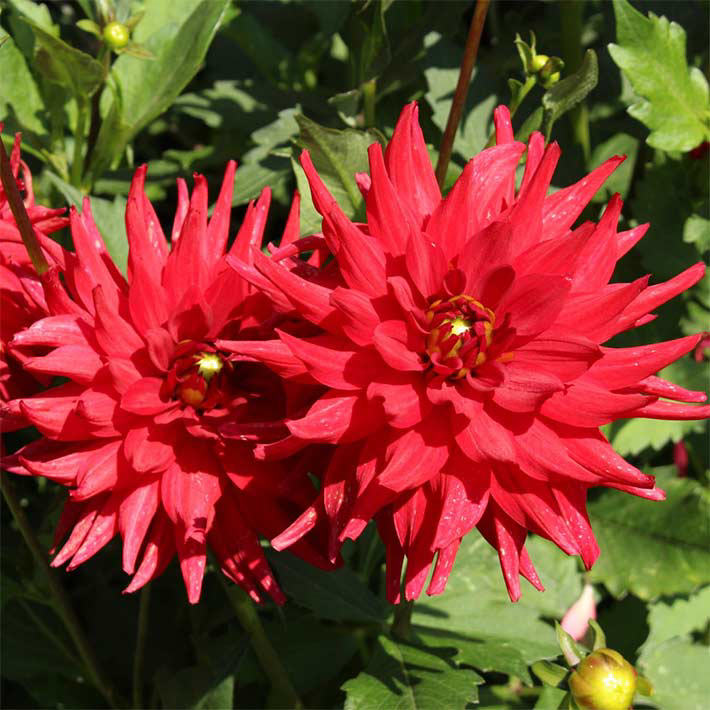
Shopping List:
- Your choice of dahlia tubers
- Digging spade
- Wooden stakes
- Container
- Ties
- Multi-purpose compost or well-rotted manure
- General-purpose fertiliser
Dahlias: planting and flowering
When to plant dahlias
If you’re considering when to plant dahlia tubers, this will depend on where you’ll be growing them. You can buy dahlias tubers from January onwards, and from April, you can get them ready in a greenhouse, cold frame, porch or windowsill. To plant dahlias in the garden, however, this will have to wait until May or June once all risk of frost has gone.
Tip: Use your garden shed as a staging area for planting dahlias. It’s a dry, organised space to store tubers, pots, soil, and tools, keeping everything protected from the elements while you prep and pot your plants.
When do dahlias flower?
Dahlias are one of the cheeriest sights to see in summertime and will flower all the way through to autumn. The best thing about them is they make brilliant cut flowers, and the more you cut them, the more flowers they will continue to produce.
Top tip: One thing to remember is that, depending on where you are in the country, these times will be slightly different. In areas with milder weather, the timescales may start a little earlier, and for those with harsher weather, it could be a little later.
1. Get your dahlia tubers and place each one in an individual pot, covering with multi-purpose potting compost up to the stump. Keep the pots in warm location to encourage the tubers to start shooting.
2. Once the shoots are 10cm high and frosts have finished then you can start ‘hardening off’ these plants, which means getting them ready for the outdoors slowly, by putting them outside in the day and bringing them back inside at night (for at least a week)
3. Once this is done, they’re ready for the outdoors. The choices are plenty for where to plant dahlias, but they do thrive best in sunny spots with fertile soil. If you’re placing in the ground, dig a hole 30cm deep by 30cm diameter in your garden and cover the base with a layer of compost and plenty of water, as well as a general-purpose fertiliser.
4. Finally place in your dahlia tubers , with gaps of around 60cm between them. If you are not planting dwarf dahlias and are going for a taller variety, you will likely also need to put in a bamboo cane or stake at this point. Fill back up with your compost.
The specifics
Which way up to plant dahlias: When you set your tubers into the soil, make sure the ‘growing tip’ (the stub where the roots meet the stem) is facing upwards.
How deep to plant dahlias: You’ll want to dig a hole that’s 30cm deep for your dahlias.
How far apart to plant dahlias: Your dahlias should be planted with around 60cm between each one.
Top tip: Dahlias will need water once the weather gets hot and dry, so be sure to soak down to the roots weekly with a watering can or hose and feed with a general fertiliser fortnightly.

Know your dahlias
Dahlia ‘Wishes N Dreams’
This popular dwarf bedding dahlia is a gorgeously bright, pink-and-red colour, and a versatile choice for either pots on a patio, or as a showstopper at the front of your borders.
Dahlia ‘El Sol’
‘El Sol’ is an informal decorative dahlia with dinner-plate sized blooms. These bright yellow and orange plants will truly bring the sunshine to your garden and do well as a potted plant or border addition.
Dahlia ‘Red Pigmy’
These dahlias are dwarf style and are therefore ideal for small, bushy and compact spaces. Their bright red colour against the green of the plant serves as a striking addition to any garden.

